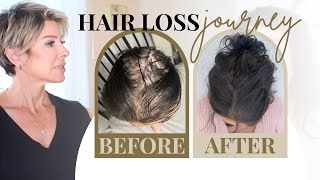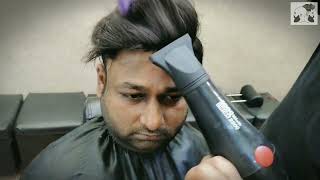Are You At Risk For Hair Loss? - What You Should Know
 Hair loss in women is one of those scary terms. No one wants to talk about it. It’s almost as if discussing it will make it real. Women talk openly about many topics that are not necessarily fun or nice or pleasant, but when it comes to hair loss, there is little to no discussion about it.
Hair loss in women is one of those scary terms. No one wants to talk about it. It’s almost as if discussing it will make it real. Women talk openly about many topics that are not necessarily fun or nice or pleasant, but when it comes to hair loss, there is little to no discussion about it.
Hair thinning is the next worst thing. Many times, hair thinning is discussed instead of, or in place of hair loss. Thinning hair is very different from losing hair. The causes are different and although thinning hair may be apparent as a precursor to hair loss, they are not interchangeable.
Hair loss can present a real issue for some women. Having good information to refer to can help women learn what hair loss is, whether they’re experiencing it and how to prevent it or even stop it and reverse it. Let’s talk about it.
What is hair loss?
On the technical side of things, hair loss is when the growth cycle stops. Hair grows in a series of phases which push hair from the follicles. The stages are anagen, catagen, and telogen.
During the three phases, hair grows, transitions and then rests. After each phase, the hair follicle is shed and then replaced with a new hair follicle. The new hair follicle then goes through the three phases of hair growth again.
When these three phases stop occurring, the result is hair loss. There are a number of things that can cause the stages of hair growth to stop. Some of those causes can be reversed, while others are permanent and mean that hair will never regrow. Hair loss can also occur in patches or all over the head. It can happen slowly or suddenly.
If the follicle is shed and a new follicle doesn’t replace it, hair will not regrow in that place. Hair follicles do not regenerate and there are no known methods available to stimulate the production of new hair follicles once the body stops producing them.
 Who is at risk?
Who is at risk?
Hair loss in women is sometimes attributable to genetics. Hereditary hair loss has been seen in both men and women and is a definitive factor in determining whether hair is thinning or if it is actually loss without the possibility of regrowth.
If your mother or aunt has experienced hair loss, this does not automatically mean that you will also suffer that fate. However, if you suspect that your hair is thinning or that you are experiencing full on hair loss, looking at close female relatives may give you an idea of what is happening on your own scalp. You may choose to seek a professional opinion to confirm that your follicles are not being replenished after they shed. Women who experience hair loss usually begin to see it between the ages of 50 and 60, however, hair loss can occur at any age.
Certain medications can also cause hair loss. Side effects of medications that cause either of the three phases of hair growth to be halted, will result in hair loss. Medications which prevent new follicles from growing will also result in hair loss.
What are the signs?
If you notice areas of your hair which appear thinner, this may be a sign that permanent hair loss is on its way. Seeing more hair than normal around your bathroom or when you comb or brush your hair may also be a sign.
Take note of the length of your hair as well. The growth or anagen phase of your hair may shorten with the onset of hair loss. You can also look to see if you’re noticing more visible scalp on the temple area or the crown of your head. Those areas are the areas where women commonly begin to lose hair.
Keep in mind that these are the same signals that may indicate hair thinning as opposed to hair loss. Hair thinning can be the start of hair loss, but it may also be something more manageable or something that you can completely reverse. Take note and then seek the opinion of a professional.
What can you do?
Going into a dermatologist who specializes in scalp issues or more specifically, female hair loss, is your best bet at getting an accurate diagnosis. The diagnosis should be your first step. Knowing that you are dealing with a confirmed case of hair loss will mean that you know what options are available to you. This will alleviate the natural inclination to guess or wonder about treatments and outcomes.
Blood work and closely examining your family history are tools you and your doctor can use to come up with a plan of action that works for your specific situation. You will also be able to discuss any medications or undiagnosed illnesses which may be contributing factors.
Hair loss in women is not the end of the world. When approached the right way, there are positive outcomes available.




